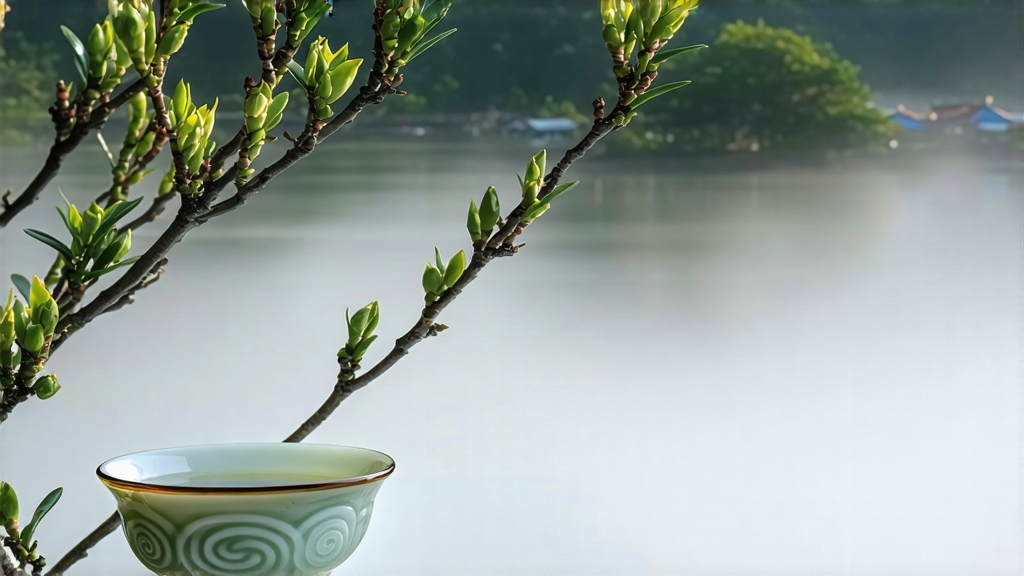
Biluochun, whose name translates literally to “Green Snail Spring,” is one of China’s ten most celebrated teas, yet among Western connoisseurs it remains an undiscovered jewel. Grown in the mist-laden microclimate of Dongting Mountain, an island in Taihu Lake two hours west of Shanghai, this tea has been prized since the late Ming dynasty for its improbably tiny, spiral-shaped leaf and an aroma so fragrant that early pickers tucked fresh buds inside their tunics to perfume their clothing. The following 2,000-word journey will walk you through its myth-shrouded origins, the astonishing biodiversity that shapes its flavor, the painstaking craft that turns a tender bud into a velvet coil, and the quiet ritual that coaxes from it a cup of liquid springtime.
-
Historical echoes from an imperial garden
According to local chronicles kept in the mountain’s Chengyun Temple, Biluochun was first noticed in 1675 by a nun who found a wild tea shrub spilling over a rock ledge. The plant exhaled a scent so captivating—peach, jasmine, and something faintly marine—that she transplanted cuttings into the temple garden. When the Kangxi Emperor visited Suzhou in 1699, magistrate Song Luo presented the tea under the provisional name “Xia Sha Ren Xiang” (“Scary Fragrance”), claiming its perfume frightened even the mountain spirits. The emperor, amused, renamed it Biluochun after the jade-green spirals that resembled tiny snails. Court records show that within a decade the tea’s annual tribute quota rose from one kilogram to nine, picked exclusively by young girls whose fingernails had to be precisely 1 cm long to avoid bruising the bud. -
Terroir: where lake, fruit, and fog intersect
Dongting Mountain is actually two peaks—Dongshan and Xishan—connected to the mainland by causeways built during the Tang dynasty. The lake’s 2,338 km² surface acts as a giant heat reservoir, creating nightly fogs that slow photosynthesis and concentrate amino acids, especially L-theanine, which gives Biluochun its signature sweetness. Around the tea gardens, farmers still intercrop plum, peach, loquat, and bayberry trees; their blossoms fall like snow onto the tea bushes, contributing subtle floral esters that fuse with leaf volatiles during firing. Soil is a sandy loam rich in quartz and diatomite, prized for rapid drainage yet high water retention, ideal for the cultivar’s shallow root system. Annual rainfall hovers at 1,150 mm, but what matters more is the 78 percent average humidity that keeps leaf cells turgid until the moment of plucking. -
Cultivar genealogy: two bushes, many clones
Authentic Biluochun is made almost exclusively from the “Dongting small-leaf” landrace, a slow-growing Camellia sinensis var. sinensis population that has adapted to lake fog for over six centuries. In the 1980s researchers at the Jiangsu Tea Research Institute selected three superior clones—Ningzhi 1, 2, and 3—prized for higher catechin-to-theanine ratios and resistance to blister blight. Gardeners still debate whether the old-garden seed-grown bushes (called “qunti zhong”) yield a more complex cup than clonal plantations; blind tastings often reveal the former possess an extra marine note likened to steamed kombu, while the latter lean toward white peach. A niche micro-lot called “Cha Xin” is picked from the first five buds that emerge on the bush’s southern exposure, yielding fewer than 300 g per mu (1/15 hectare) and commanding prices above US $3,000 per kilogram. -
Picking calendar: the 28-day sprint
The harvest window opens when lake surface temperature stabilizes above 10 °C, usually between 15 March and 12 April. Only the “single bud with the just-opened first leaf” (yi ya yi ye chu zhan) is taken, ideally 1.6–2.0 cm in length. Experienced pickers finish each pluck with a barely audible “pop,” the sound of the cambium snapping without tearing the stem sheath. Daily picking starts at 5:30 a.m., when fog still beads on the leaf; by 9:00 a.m. sun angle rises above 30°, evaporating dew and risking oxidation. A swift picker gathers 600